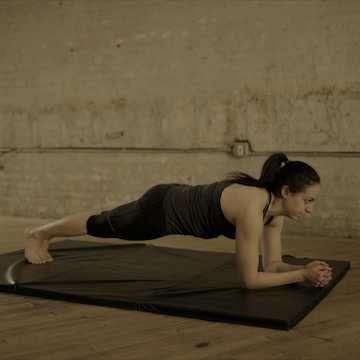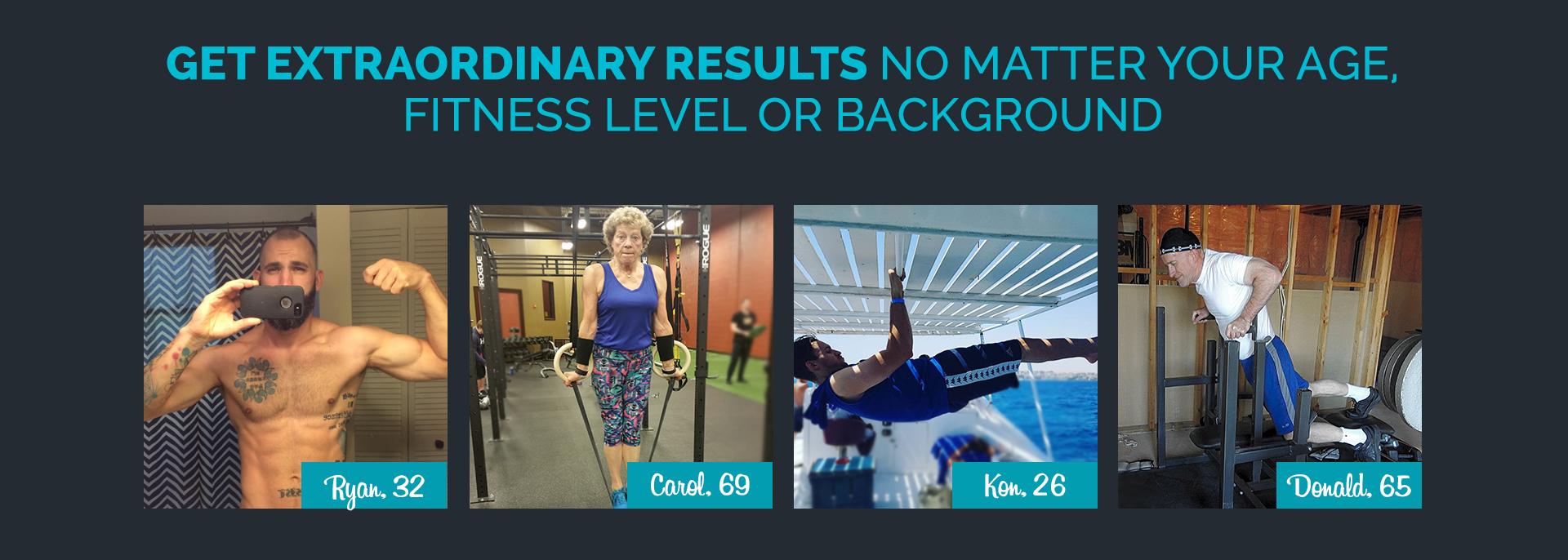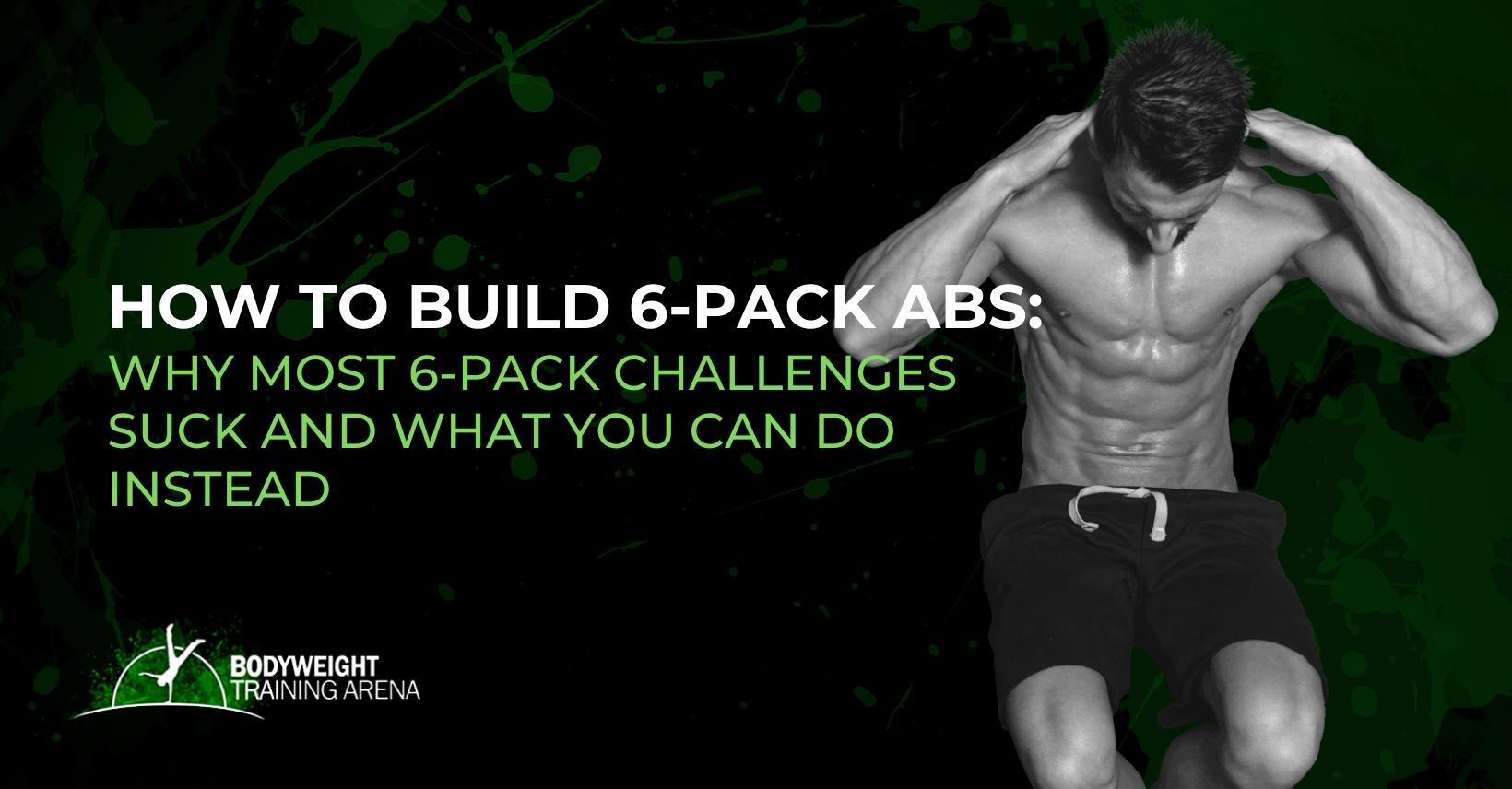
Join the tribe of Movement & Calisthenics Athlete – People just like you that are working with their own body weight to get strength, lose fat build muscle, recover from injuries and live their best lives!
Ab challenges are all the rage these days. You can’t scroll through your Facebook or Instagram feed (and now TIKTOK!) without seeing some video of someone inviting you to do an ab challenge on how to build 6-pack abs.
But are 30-day ab challenges claiming to build a 6-pack in a short amount of time really worth it?
If you are one of those people who have tried ab challenges, then this is for you. But, unfortunately, you might be wasting your time and, even worse, ruining your gains with those challenges.
In this article, we will discuss why ab challenges suck and what you should do instead!
5 Reasons why Ab workout challenge sucks
You’ve probably encountered a 30-day abs challenge and figured, “Hey! I can do that at home and be looking beach-ready in no time!”.
That is the only good thing about a 30-day abs challenge; it’s a great way to get you motivated at the beginning.
Unfortunately, the motivation you get from the ab challenge could lead you to some trouble in the long run!
Imbalanced core training
The usual ab challenge has tons of ab exercises and not much variety that targets the multiple facets of the core.
You might be thinking, “Hey! The challenge works out my upper, middle, and lower abs. SO WHAT’S THE PROBLEM?!”
Unfortunately, that’s not enough if you truly want a solid 6-pack for both aesthetics and functionality.
As much as you would want to build bigger ab muscles with the ab challenge, you might forget that the abs are just a part of the muscle group: the core.
The core includes the sides (obliques), back (erectus spinae), and covers different functions other than what you get to train with regular abs training.
Focus on the abs alone could lead to strong abs but weaknesses in other departments of the core. Weaknesses in your core could lead to movement dysfunction or loss of movement, aches, pains, postural problems, and much more.
Training abs along is just similar to training your arms alone. You might get bigger arbs, but then your legs or the rest of the upper body isn’t proportional aesthetically and functionally.
Poor exercise choices
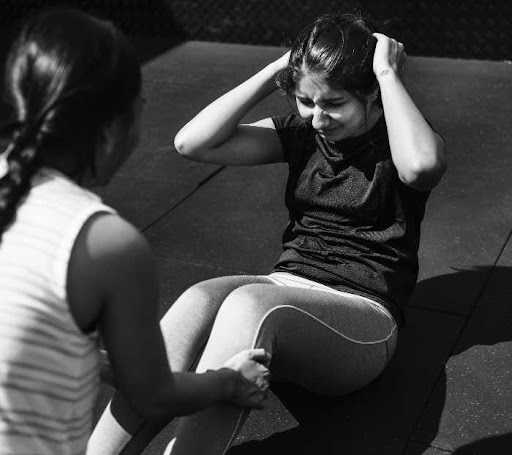
Say no to 100 situps challange! Photo from Rawpixel from Freepik
Many ab challenges offer limited exercises or exercises that are not efficient in helping you build stronger and bigger abs.
The number one culprit in this department is making you do crunches and sit-ups throughout the whole 30-day ab challenge span. This seems like a good and tempting challenge to a less experienced individual that claims to get you a six-pack.
Unfortunately, doing this repeated movement for four weeks without other progressive overload techniques can be detrimental to your lower back. Sit-ups, for example, are repetitive ab flexion that also adds a compressive force across the spine. Repetitive situps, usually done in traditional ab training and ab challenge, could induce lower back pain and injuries. This is supported by a 2018 study in which two sets of US soldiers either did traditional ab training with sit-ups or core stabilization exercises without sit-ups. The former group had longer days that couldn’t work due to lower back injury.
Aside from the risk of lower back pain, sit-ups also add strength to the sitting posture that we already do most in our days. In addition, it isolates the upper abs that do not integrate well with the rest of the body.
Some poor exercise choices are side bends and Russian twists.
No rest day
Your abs are like any other muscle. It gets exhausted. It needs time to rebuild itself to get strong and bigger. It needs rest.
Common 30-day ab challenge forces you to train every day without any rest day, claiming that it is needed in building your six-pack.
Sadly, this will only lead to overtraining of the ab muscles. It’s a very stupid way to train.
Train abs like any other muscle when you undergo strength training. Add at least a rest day or two for your core.
This especially holds true since you wouldn’t want to be JUST training your abs. Like we said early, this type of training can lead to muscular imbalances.
You need to train your whole body, then incorporate a proper abs challenge or routine at the end of your training session.
When you finish your ab training, your abs get weak, and it needs time to recover. If you’re planning to train other parts of your body the next day, get ready to face some annoying consequences.
Core activation is required for many to all calisthenics exercises. Therefore, having them overtrained or weak from yesterday’s training will severely affect your performance in doing compound movements.
Add a rest day to your ab workout, and do not overdo your ab training. You don’t work out your chest without a rest day, right? So do the same for your abs.
Also, think of proper rest periods when working the abs. You can’t always do mountain climbers, then V-up, then planks, then side plank every time without any rest. So like any other muscle, train your core with the proper rest periods.
How long should I rest in between sets – Make faster and safer progress
Not personalised
One of the main reason why the 30-day abs challenge suck is the lack of personalisation.
You might find a 30-day ab challenge for beginners, intermediates, or advanced. The problem is that even at the beginner level, not all beginners have the same training experience. There are other beginners that are more experienced while other beginners have 0 knowledge and experience and any form of fitness.
That’s going to be a problem because your typical 30-day ab challenges do not offer any adjustments for the differences in skill level.
What if mountain climbers are too difficult for you? What if you can only hold the plank position for 10 seconds? What if you’re violently shaking when holding an elbow plank for even just 5 seconds?
30-day ab routines don’t help you with these concerns, and it doesn’t offer any other progressions to assist you with the harder variations.
Forcing yourself with these movements won’t be an effective use of your time and can even lead to injury.
False claims to shed fat and build abs!
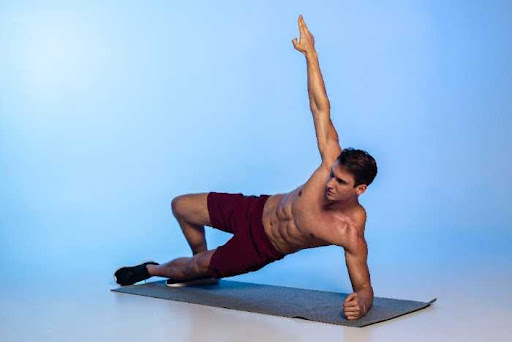
Photo from iskiest Images on Freepik
THIS IS ONE OF OUR PET PEEVES. Unfortunately, as much as we want to think that working out a certain muscle group can help you burn fat specifically there: OUR BODIES DOESN’T OPERATE THAT WAY!
This has been a longstanding misconception in the fitness industry in which still many people believe and many “fitness experts” take advantage of.
Yes, we train our ab muscles to make them grow and become more visible, but the only way it will be VISIBLE in the first place is by losing the fat that’s covering it. So don’t get too obsessed with doing ab workouts for your 6-pack!
How to build 6-pack abs PROPERLY
Now that we’ve covered the reasons why 30-day ab challenges suck and it’s only a waste of your time, let’s talk about how you can build a six-pack effectively, efficiently, and safely.
Proper nutrition
You’ve probably heard this saying before, “abs are built in the kitchen.”
The biggest factor how people can get their six-pack to show is through proper nutrition. There’s no sense doing 10000 sit-ups or even doing the best ab exercises if you’re not taking good care of your nutrition.
You see, all of us have abdominal muscles underneath. The key factor in making it show and visible is cutting down the layers of fat covering your abs.
And the best way to cut the fat is by eating an appropriate amount of calories less than what is needed to maintain your body composition. This way, your body can “burn fat”.
Consume enough protein while progressively working out to maintain the muscle you need so that won’t get a “skinny fat” physique.
Holistic approach to core training
While building bigger and stronger ab muscles is great, overall core strength and stability are vital for you. If you want to be in the best shape of your life aesthetically, it’s much worth it if you can also move well and how you look.
The better approach to training your abs is by taking a holistic approach and covering the different facets of the abs. The abs are important, but it’s NOT more important than the other muscle groups.
Train each muscle equally.
Better exercise choices
Not all exercises are the same. There are far better options to train your rectus abdominis other than just doing sit-ups and crunches. Some exercises, such as the sit-ups, put too much loading on the spine and don’t activate the core efficiently as the other ab exercises.
We will cover the options that you can get into in the latter part of this article.
Compound movements
Aside from doing the smarter exercise options, you can train your abs by using your regular compound calisthenics movement.
Multiple separate studies on pull-ups and push-ups using Electromyography (EMG) to measure muscle activation prove a high core activation, particularly the abdominal muscles when performing these exercises.
Meaning that you can get a much stronger core by training these compound movements alone. Just think about it, during push-ups, you’re basically doing a moving high-plank. Then for pull-ups, you need to stabilize your core to activate your upper body more for the pulling motion.
Focus on the compound work rather than obsessing on your abs. Sorry for the emphasis. We can’t stress it enough!
You can also treat your 6-pack journey like building your muscles in general. For a complete muscle-building guide, check this article out:
Best core exercises
What is Posterior Pelvic Tilt?
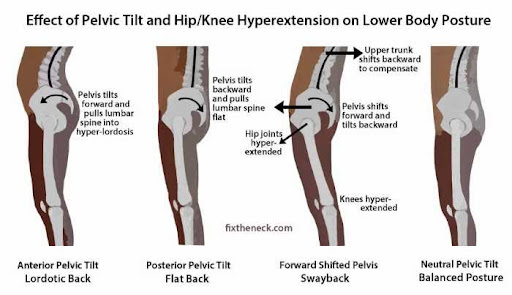
Photo from StarkwoodChiropractic
First, let’s cover this simple move that you will be used in many, if not all, core exercises, including other compound calisthenic movements.
You might see and hear this word thrown a lot when talking about core exercises. Posterior Pelvic Tilt is done by tilting your hips backward and pushing your groin forward. This position eliminates unnecessary loading on your spine and further activates your core.
You should learn how to perform this simple movement and keep the position while bracing the core when performing many ab exercises.
Plank variation
The plank is one of the best core stabilization exercises that engage the whole core and body.
It has good transfer to other calisthenics movements, and you can easily overload or regress it depending on what you need. It trains your core to stabilize in position and resist movement. Perfectly transfers to similar exercises such as pull-ups wherein you have to resist movement (anti-extension) in your core as you pull your body weight up towards the bar.
Here are some plank variations you can use for your ab training. The variations are not limited to the examples below, as there are many exercises you can do for this exercise.
Elbow plank
The regular plank position is done with legs extended—elbows on the floor shoulder-width apart. Straight bodyline plank position. The basic plank can be made easier by moving to your knees instead of flat feet on the floor.
At the same time, this exercise can be made more difficult by moving into one arm and switching from one hand to the other. Next, move into a high plank position for added variety. With planks, aim to do a minimum of 30 seconds.
Mountain climbers
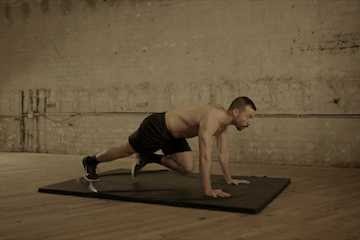
Go into a high plank position as your starting position. Next, move your right foot towards your chest. As you move back your right foot, simultaneously move the left leg towards your chest. Alternate these motions for reps. This exercise is great for building a strong core even with motion while improving your endurance. Mountain climbers are a great option to implement in a HIIT circuit. Instead of counting for reps, aim for a minimum of 30 seconds.
You can also make mountain climbers variations by moving unto your elbows. Move your left knee towards your right forearm, then as you move it back into the starting position, move your right knee to the left side. Repeat this alternating movement for reps. One cycle of both sides is one rep. The lower position challenges stability and your mobility as you extend the lever. Keeps hips level to maintain the difficulty.
Side plank position
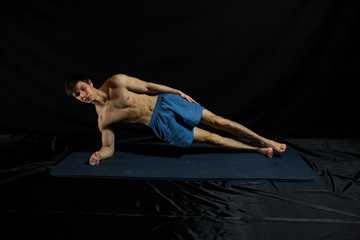
Planks can be adjusted to target more of the obliques or the side of your core. For example, instead of both elbows in front, you’ll start with your right elbow on the floor while your body is facing forward instead of facing the floor. Your right toes are only supporting the lower body. Hold the position for reps, then shift to the left elbow and other side.
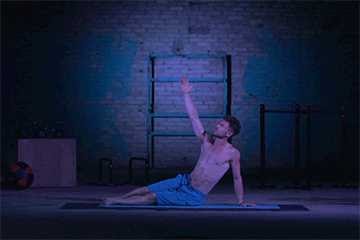
You can also move to your hands instead of elbows with the side plank. The same concept applies. Right arm on the flor, then right leg should be on the floor. You can let the opposite leg rest on the working leg or raise the left leg into a straddle formation for added difficulty. You can also add some movements such as a hip dip motion while in the side plank position to target the left and right hip in addition to the core.
Knee raises/ Leg raises
Here’s FitnessFAQs’ Daniel Vadnal on how to do knee raises and load them correctly.
Knee raises, or leg raises, are one of the best exercises to build abs, and here’s why.
Although seemingly only good for the lower abs, this exercise hits all the ab movements effectively and your hip flexors. Stronger hip flexors transfer to many calisthenics exercises such as L-sits. Not only does it build your abs, but it can also improve your hip flexor mobility.
When doing knee raises or leg raises, you can either go hanging or dip support hold position. To train this exercise efficiently, you would need to have good upper-body strength and endurance to hold you in position.
When performing knee raises, move your hips until 90 degrees and don’t limit your knees until 90 only. High knees should be achieved past hips to activate the full range of motion of the abs. Hold the top position for a few seconds, then lower the legs down with control. That’s one rep.
Activate your lower abs when initiating the movement, and don’t rely on your legs for movement. Keep high knees past hip level.
Legs bent variations offer an easy way to scale by incorporating weights into the movement. In addition, it’s a convenient way to build beefier abs.
You can also do it with your legs straight. Straight legs require mobility but are also a good way to scale and target the abs. Knees bent is excellent for scalability as you can add weights to increase core strength further and build muscle.
Hollow position
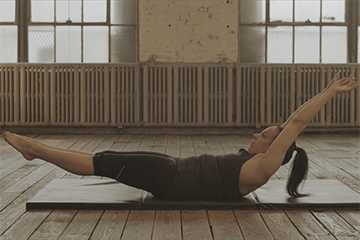
If you’re looking into strengthing your abs to fit the demands of other calisthenics movements, then the hollow body position is your best friend.
The hollow position is used in exercises such as planche, handstands, and levers. This also applies to push-ups, pull-ups, and dips as well.
To do the hollow exercise, lie down on the floor as the starting position. Next, crunch your abs very slightly and tuck your chin to your chest. This engages your core. From there, raise your arms overhead and lift your legs a few inches off the ground, then hold. You may keep your foot flexed or pointed to engage your legs. Hold this move for a minimum of 30 seconds.
You can adjust many factors to vary its difficulty.
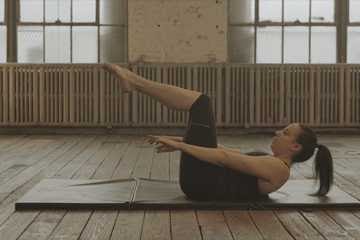
The arms extended is for a longer lever that’s much more difficult. You can move your arms by your side to shorten the lever, then while your legs are off the floor, move one knee towards your chest, then hold. Switch legs alternating left leg and right leg while maintaining the hollow position.
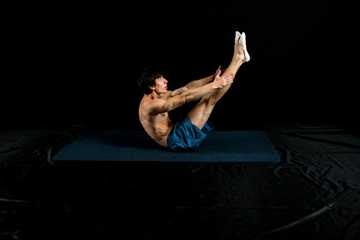
This is the top position of the V-ups before lowering back down to a hollow hold.
You can add a snapping motion into a V position to do V ups. For example, while keeping the legs extended, crunch your upper body upward and simultaneously raise your legs towards your face.
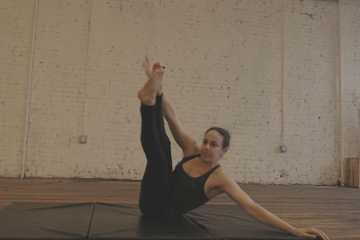
V ups can also be done while your body is in a diagonal position for external obliques activation. Just don’t forget to train on the opposite side. For example, you can use your left elbow or left hand when training your right obliques, then use the right elbow to train the left side of the core.
Ab wheel or ring-roll outs
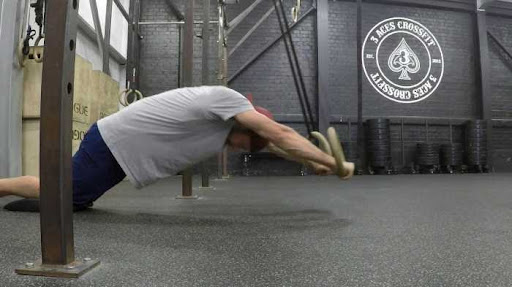
Knee ab ring roll-out by The Sustained Training Method
This exercise is similar to the plank position but adds a lengthening component of the core.
There are many ways to progress to this impressive and difficult ab exercise. For example, you can use a resistance band to achieve a larger range of motion when rolling and slowly lower or doing it on the knees. You can also limit the range of motion when performing the exercise.
The ultimate goal of this exercise is to go to the lowest position while keeping a PPT and a good, straight line.
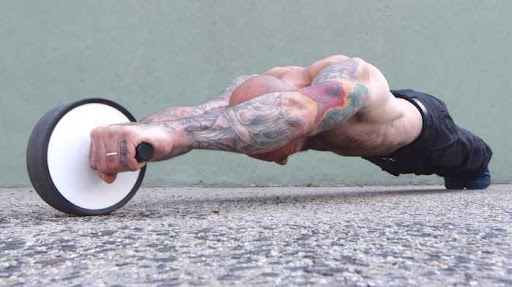
Full-extension on ab wheel. Photo from Bodybuilding.com
You can perform it on the rings or also do it on ab wheels. Ring rollouts are preferable since it also adds an instability component and can easily be scaled by adjusting the height of the rings.
Arch ups
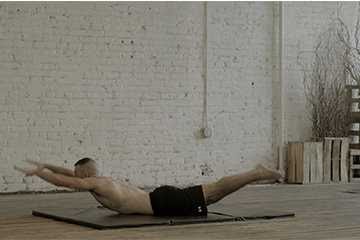
Arch up trains the lower back. The lower back is usually neglected in our training regimen. However, many people tend to have a weak lower back that causes lower back pain, so don’t forget to train this.
To do this, begin in a prone position. Next, activate PPT, then raise your upper body and lower body simultaneously. Don’t rely on the momentum generated by your limbs, and focus on the back for initiating the movement.
You can use many progressions to learn this skill, such as adjusting the range of motion, isolating the lower body and upper body, or adding holds to the exercise.
Don’t forget to add a rest day in between this exercise since your lower back might experience DOMS the next day!
Reverse plank
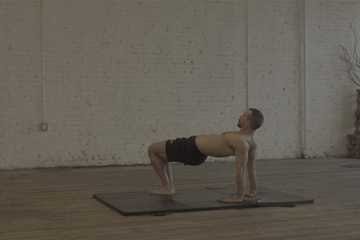
If you can do planks on your forearms, you can also reverse them into a tabletop position to train your posterior chain. The tabletop position develops strength on your upper back and lower back muscles while improving your shoulder mobility. However, to train this skill, you must already have a decent level of shoulder mobility. You can increase the level of the exercise by raising your legs on a platform or shifting from one arm to the other.
Bird dog
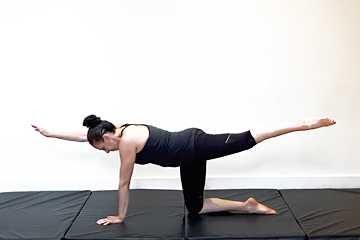
This underrated core exercise is perfect for developing core awareness and activation. While it’s not actually an ab-building exercise, going through movement helps you understand the motion of engaging and activating your abs while simultaneously adding other motions in the movement.
To perform, move into a quadrupled position. Lift your left hand off the floor and move your left arm forward until your left hand is parallel with your left shoulder. At the same time, lift your right leg backward until it is parallel with your right shoulder. Lower down with control, then to the opposite side.
Remember: raise the left arm, right leg while right hand and left knee on the ground. Next, raise the right arm with the left leg while the left hand and right knee are on the ground.
It might be confusing at first, but that’s the trick of the exercise. You’ll improve your coordination while improving your core activation at the same time.
How long before I can achieve a six-pack?
You will hate this answer: IT DEPENDS.
Each person is different. We all have different starting points and different bodies that respond differently to various stimuli. So there isn’t an exact day before you can achieve the highly coveted washboard abs.
Many factors affect how long you can get there, such as age, metabolic rate, diet, workout quality, stress management, recovery, and much more.
Training the core seems complicated, but it shouldn’t be. To make it simplified, you can get help from The Movement Athlete team so we can provide a PERSONALISED and ADAPTIVE calisthenics routine as you build your six-pack in your calisthenics journey.
The first step to personalisation is by taking an assessment to gauge your skill level so that we can provide an accurate program that suits your current skill level and skills.
TAKE THE ASSESSMENT NOW!


